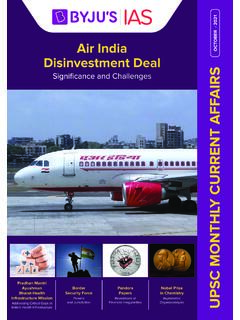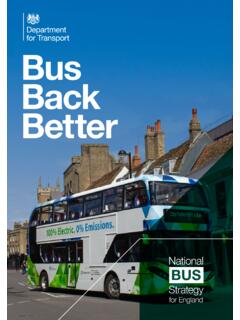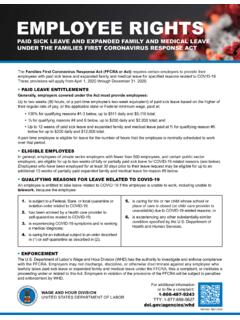Transcription of Decimals lesson plan - Calculate
1 Decimals lesson plan LEVEL: Upper Primary CONTENT: Number & Algebra FOCUS: Place value: Decimals In the Classroom PURPOSE Learning Intention We are learning to recognise that the place value system can be extended to tenths, hundredths and thousandths and using decimats to help us. Success Criteria I can compare Decimals and recognise which is larger, smaller or equal. I can use place value to numbers recognise numbers smaller than one. I can recognise that 10 hundredths make one tenth. I can write tenths and hundredths as fractions and Decimals and explain my thinking. I can recognise the size of the decimal number in the place value system. I can correctly pronounce Decimals as tenths, hundredths, thousandths. WARM UP Decimal Density Give each group of 2-3 students a set of the shaded decimat cards Ask students to order them from smallest fraction shaded to largest fraction shaded Students need to justify their conclusions Decimals Comparison Test Give each student the Decimals comparison test Give them 2 5 minutes to complete it.
2 INTRODUCTION This activity provides opportunities for the symbols for fractions and Decimals to be connected and highlights the place value of Decimals to thousandths. This model has the advantage of showing the proportional relationship between the respective place values ( ten thousandths will make one hundredth, and ten hundredths will make one tenth. It was adapted from an article by Anne Roche called DECIMATS: Helping Students To Make Sense Of Decimal Place Value: EXPLICIT Materials: TEACHING &. Large decimat per student. LEARNING. Two dice (one standard six-sided die and one containing these fractions, */10, */100, */100, */1000, */1000, */1000). Pencils and paper for recording. Instructions: Player A rolls the two dice and then shades the product of the two numbers displayed. Player A then records how much of the decimat is shaded' in the table provided on the handout.)
3 This needs to be shown as a fraction and as a decimal. Player B rolls the two dice and continues the game, with each player recording how much of the decimat is shaded' after their turn. It is permitted for tenths/hundredths to be further divided into hundredths/thousandths if more hundredths/thousandths are required. For example if a player has shaded all of their hundredths and they then roll four hundredths then the player can cut' a tenth into 10 equal pieces (therefore creating hundredths) and shade four of these. If the product of the roll is greater than the remaining unshaded part of the decimat then the player misses a turn. The first player to reach one (by shading their complete decimat) or the player closest to one (by shading more of their decimat) after a certain amount of time has elapsed, is the winner. Each turn must be written and shaded in a different colour to help keep track of each turn and help students check their working.
4 Decimals lesson plan DISCUSSION/ What do you know about unit fractions? KEY Can you represent fractions in different ways? QUESTIONS. What do you know about Decimals ? What does each digit in the decimal represent? Can you explain all of the parts of the decimat? Can you represent the shaded part of the decimat as a decimal value? Can you represent these Decimals values on a decimat? Can you show a decimal as a fraction? Can you show a fraction as a decimal? How many parts do we break the unit up into to make , , Can you place these Decimals in ascending/descending order? DELIBERATIVE This activity allows students to develop an understanding of Decimals and how they PRACTICE connect to fractions and the area model. It enables them to make comparisons between Decimals and their sizes and build a greater understanding of what makes a larger decimal and smaller decimal. The decimats provide them with a representational model in order for students to test their conclusions using the area shaded.
5 REFLECTION Refer back to the shaded decimat cards Now that students have been exposed to the correct format of writing Decimals to tenths, hundredths and thousandths using the decimats, ask students to correctly write the decimal value under each shaded diagram. Did the students make any changes to the original order of the shaded decimal cards? If so ask them to explain their reasoning. RESOURCES DECIMATS: Helping Students To Make Sense Of Decimal Place Value Longer is Larger: Decimals Comparison Test discipline/maths/ Curriculum Connections CONTENT AUSTRALIAN CURRICULUM. YEAR 4 NUMBER AND ALGEBRA. Recognise that the place value system can be extended to tenths and hundredths. Make connections between fractions and decimal notation (ACMNA079). Elaborations: using division by 10 to extend the place-value system using knowledge of fractions to establish equivalences between fractions and decimal notation YEAR 5 NUMBER AND ALGEBRA.
6 Recognise that the place value system can be extended beyond hundredths (ACMNA104). Elaborations: using knowledge of place value and division by 10 to extend the number system to thousandths and beyond recognising the equivalence of one thousandths and Compare, order and represent Decimals (ACMNA105). Elaborations: locating Decimals on a number line WHAT CAME Students require knowledge of fractions and parts of a whole. BEFORE They will understand that breaking a unit into ten parts will make tenths and one of these parts can be represented as 1/10. Decimals lesson plan Students understand the concept of place value and how it applies to the base 10 system. WHAT COMES Students will develop their ability to successfully compare Decimals in terms of NEXT their numerical value. Add and subtract Decimals , with and without digital technologies, and use estimation and rounding to check the reasonableness of answers (ACMNA128).
7 Multiply Decimals by whole numbers and perform divisions by non-zero whole numbers where the results are terminating Decimals , with and without digital technologies (ACMNA129). Multiply and divide Decimals by powers of 10 (ACMNA130). Make connections between equivalent fractions, Decimals and percentages (ACMNA131). VOCABULARY decimal, decimat, tenths, hundredths, thousandths, decimal place, fraction WHAT Year 4. PROFICIENCIES Understanding includes making connections between representations of numbers, ARE TO BE partitioning and combining numbers flexibly, extending place value to Decimals , using UTILISED? appropriate language to communicate times and describing properties of symmetrical Understanding shapes Fluency Fluency includes recalling multiplication tables, communicating sequences of simple Problem Solving fractions, using instruments to measure accurately, creating patterns with shapes and Reasoning their transformations and collecting and recording data Communicating Problem-solving includes formulating, modelling and recording authentic situations (NSW) involving operations, comparing large numbers with each other, comparing time Justifying (NSW)
8 Durations and using properties of numbers to continue patterns Reasoning includes using generalising from number properties and results of calculations, deriving strategies for unfamiliar multiplication and division tasks, comparing angles, communicating information using graphical displays and evaluating the appropriateness of different displays. Year 5. Understanding includes making connections between representations of numbers, using fractions to represent probabilities, comparing and ordering fractions and Decimals and representing them in various ways, describing transformations and identifying line and rotational symmetry Fluency includes choosing appropriate units of measurement for calculation of perimeter and area, using estimation to check the reasonableness of answers to calculations and using instruments to measure angles Problem-solving includes formulating and solving authentic problems using whole numbers and measurements and creating financial plans reasoning includes investigating strategies to perform calculations efficiently, continuing patterns involving fractions and Decimals , interpreting results of chance experiments, posing appropriate questions for data investigations and interpreting data sets.
9 ASSESSMENT Decimal comparison test Repeating the Decimals comparison test with students will establish whether the concepts taught through the Decimats Game' have been understood and can be applied. Teacher Knowledge STORIES AND The Decimals comparison test is a simple but powerful pre-assessment tool to determine ANECDOTES how many students possess the misconception that longer is larger. Quite often, it is surprising to teachers how many students hold this misconception. METHODS FOR This method of engaging students with Decimals can be introduced on its own or ENGAGEMENT after the concept of Decimals has been introduced using LAB (Linear Arithmetic Blocks) or decipipes. It is important to explicitly show how the unit or one whole is Decimals lesson plan broken down into their parts using the presentation provided or another method of your choice. This game was designed to be repeated regularly over the course of the unit as it may take time for the students to grasp it fully.
10 It is also important for them to show the decimal in all its parts; as a fraction and as a decimal in order to make the connections between the two representations. As an addition, writing the decimal in words is also just as important. Also, ensure that the students write the total decimal shaded, as this will also allow them to consolidate the concept as well as lead the way for decimal addition. Encouraging students to refer to the Decimals in terms of their fractional parts. as one tenth and 2 hundredths or 12 hundredths instead of zero point one two. IMPROVISATION A decimat that has been broken up into tenths only can be given to students who OF MATERIALS need enabling prompts or are at Level 4. The fractional die will then only contain 1/10. A decimat broken up into tenths and hundredths can be given to students who are not quite at the level of understanding required to introduce them to the thousandths unit.








